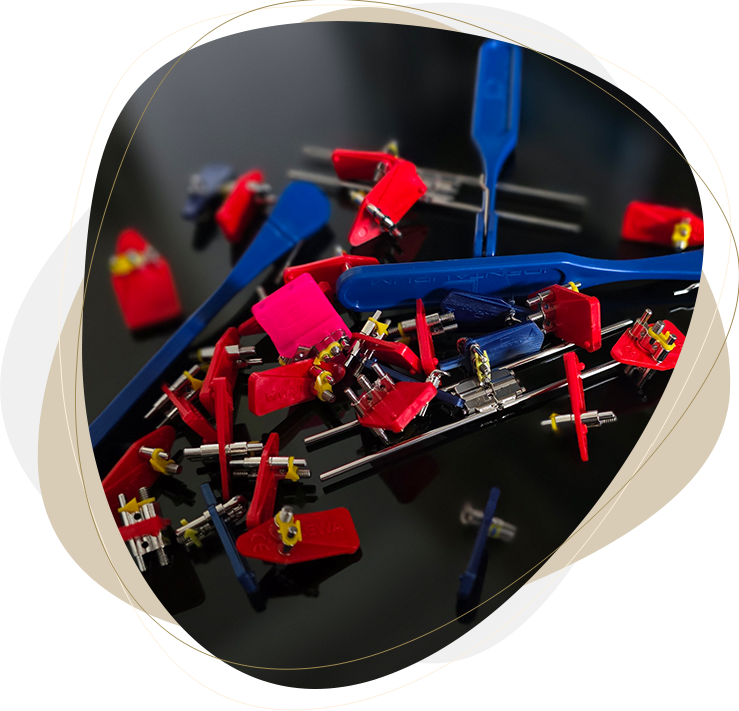Table of Contents
Orthodontic Screws - Key Information
Characteristics of Orthodontic Screws
- Mechanical components in removable orthodontic appliances.
- Made from high-quality stainless steel or titanium.
- Can act on the entire dental arch, groups of teeth, or individual teeth.
Mounting Orthodontic Screws
- Most standard screws are mounted in acrylic materials by "embedding" them.
- The central part of the screw has a plastic cover to prevent liquid acrylic from entering the mechanical part.
- This cover ensures precise placement of the screw in the working model.
Structure of the Screw
- The screw consists of a threaded shaft, one or two guides, and a housing.
- The housing allows precise placement of the screw on the working model.
- The screw spindle is double-threaded, with a head equipped with four holes spaced 90 degrees apart (¼ circle).
Mechanism of Action
- Screw activation is done using a key – one full turn of the key moves the screw ¼ mm.
- The direction of force changes depending on the rotation of the spindle in the wings, allowing teeth to be moved in the desired direction.
- Different appliance constructions depend on the placement of the screw and the plate cut.
Effects of Using Screws
- They allow for the expansion of the dental arch, either single or double-sided.
- Enable centering of teeth within the arch.
- Can achieve reciprocal opposing movement of both arches, as in the Wunderega appliance with a Weisemann screw.
Placement and Action of Screws
- Screws are placed in the acrylic plate of the appliance, exerting force on the bone substrate and teeth.
- The greatest forces are generated immediately after the screw is turned.
